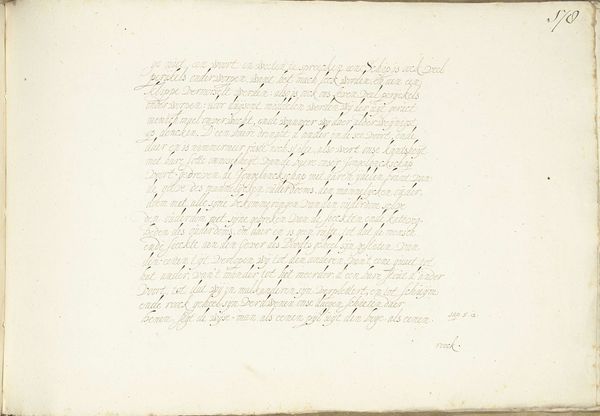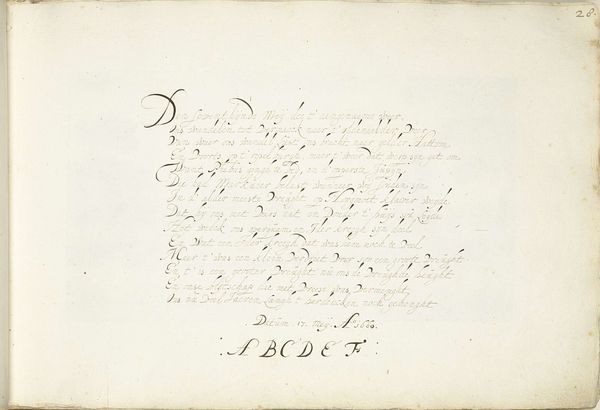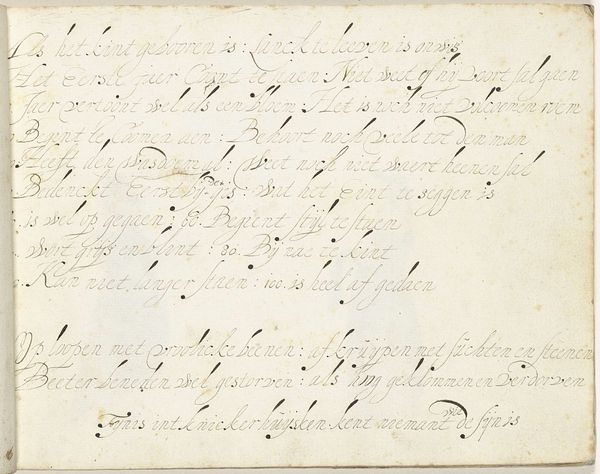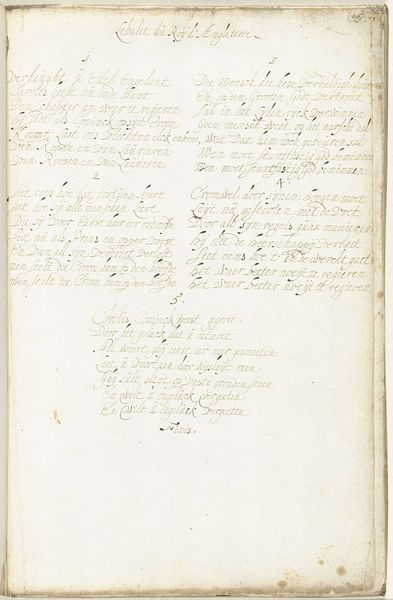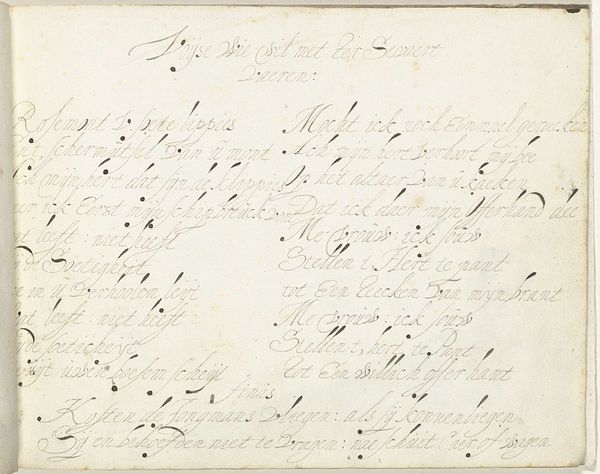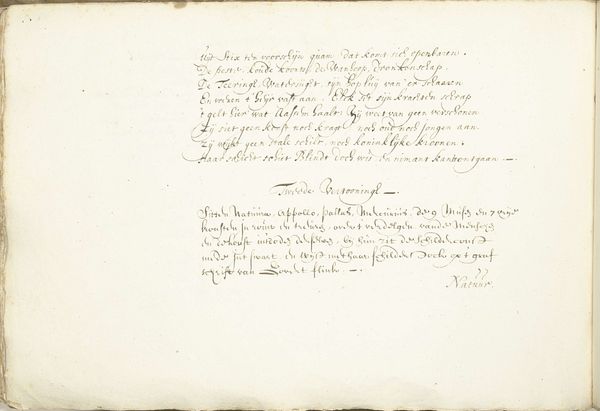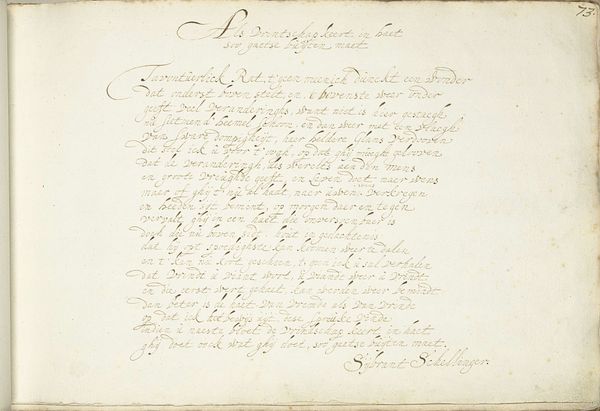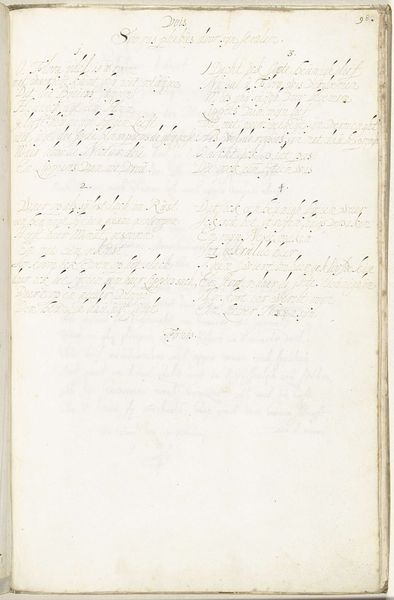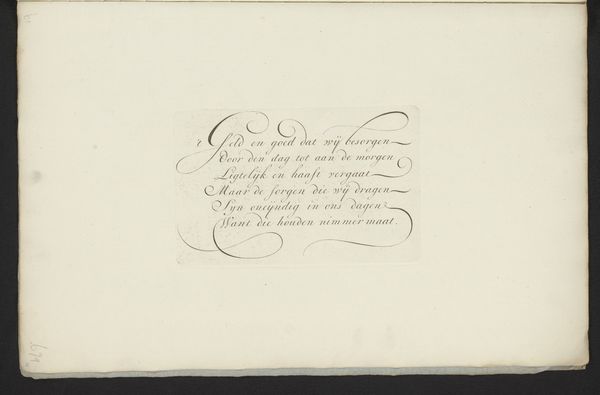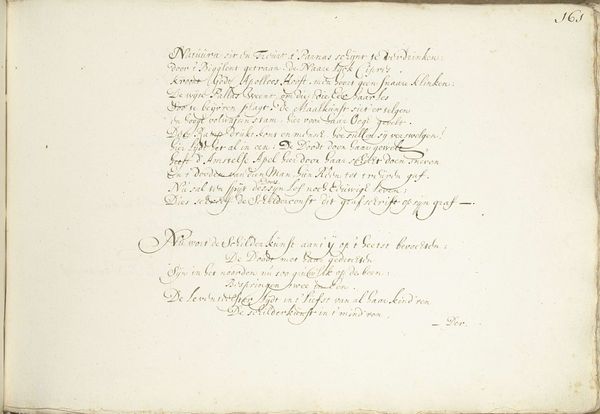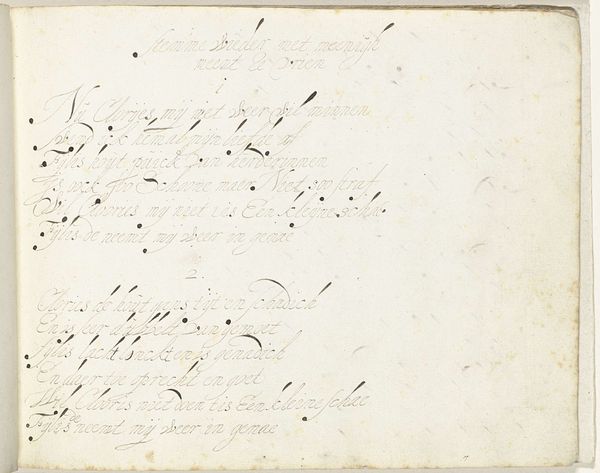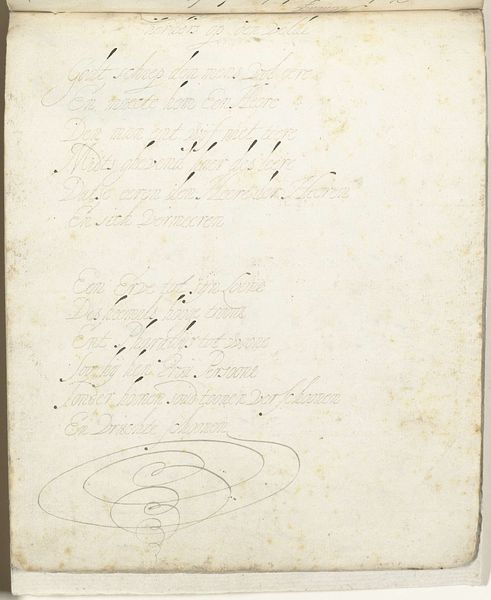
drawing, paper, ink
#
drawing
#
dutch-golden-age
#
paper
#
ink
#
genre-painting
#
watercolor
Dimensions: height 243 mm, width 360 mm
Copyright: Rijks Museum: Open Domain
Curator: At the Rijksmuseum, we have this drawing by Gesina ter Borch, dating from roughly 1660 to 1687. It's part of her "Preek over vanitasthema's (deel 7)" series—a sermon on vanity, rendered in ink on paper. My first impression is, wow, there's just…so much script. Editor: Yes, immediately it speaks to me of the power and presence of text itself. How can we consider this artistic and cultural production? In this, how is this "sermon" actively confronting prevailing beliefs and how might it reveal social tensions during its creation? Curator: The "vanitas" theme was common in Dutch Golden Age art, reminding viewers of life's brevity and earthly pleasures' emptiness. Ter Borch uses meticulously crafted script, like visual rhetoric, to enhance the sermon’s weight. This meticulous script style lends to the message, as it implies time and care were invested. Editor: Right, and thinking about ter Borch as a woman artist, how does she claim authority to address weighty matters of morality and faith in a heavily patriarchal context? This intricate handwriting feels both assertive and inherently subversive for her place and time. Curator: Indeed, it subtly questions prevailing attitudes through symbolic meaning, presenting a voice when societal conventions would expect none. You have a surface-level drawing of letters, but dig deeper, and it's actually making pretty radical points of protest against inequality. Editor: Absolutely, the act of handwriting itself embodies a labor often assigned to women, reframing societal perceptions of both women and artistic production. Furthermore, in rendering her ideas as "art", isn't she reclaiming not only her artistic agency, but challenging those "vanity" critiques to begin with? Curator: Looking at this drawing offers a new way to think about not only the Dutch Golden Age, but to see our time a bit differently. Editor: Right. Perhaps understanding Ter Borch might empower us, just a bit, to resist oppressive narratives, and see how a voice and art, even presented as script, truly shape social narratives across time.
Comments
No comments
Be the first to comment and join the conversation on the ultimate creative platform.
